Research
Experimental Electrokinetic Nanofluidics
The electric double layer (EDL) at the interface between electrolytes and charged surfaces significantly affects the performance of fuel cells, batteries, biologically-relevant ion-selective channels, supercapacitors, desalination, other electrokinetic, and electrochemical and bioanalytical processes. Comparing with the microscale, researchers are still studying fundamental details of the EDL in nanofluidic channels, especially in the case of multivalent and finite ion sizes. Knowing that the thickness of EDL depends on the concentration of the solution and the surface charge.

The ability to monitor chemical surface reactions precisely and in real-time can provide fundamental insights to help us create highly relevant and complex nanoscale technologies (e.g. cell surface engineering, surface-anchored biosensors, 3D nanostructuring, etc.). The kinetics of self-assembled monolayer formations have been reported for several types of reactive groups (trimethoxysilanes, thiols, etc.).
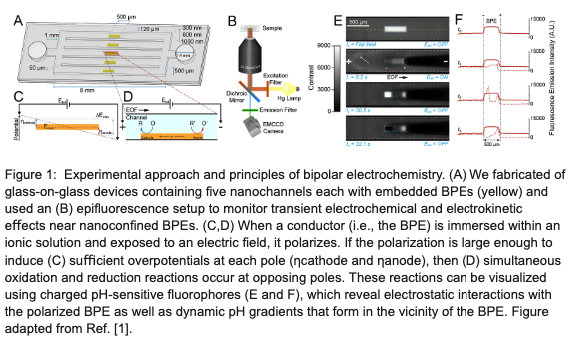
To probe the behavior of nanoconfined bipolar electrodes, we have performed preliminary experiments in which we monitored electrochemical dynamics in real-time using charged fluorophores. Through analysis of fluorescence enhancement and pH-sensitive quenching events, our results indirectly reveal the electrokinetic and electrochemical phenomena that occur near a nanochannel-confined BPE as it becomes charged, reaches a quasi-steady operating state, and then discharges upon the removal of an applied field.
Biosensor Projects
Boronic acids (BAs) can form reversible covalent linkages to 1,2- and 1,3-diols which in particular present in sugars. In the process of binding diols, BAs become considerably more acidic, with pKa decreases of 2-4 units. The binding-induced change in BA acidity can induce changes in solution pH, electrostatic interactions and surface charge. These properties may ultimately be useful for optical, conductimetric, and field-effect transistor-based glucose sensing. However, mono BAs (MBAs) show higher affinity to other interferential sugars in blood than glucose.
Drifts over time are a thorny problem in CGMs, no matter it is electrochemical (enzymatic or non-enzymatic) or optical. The exist of instability results in short life time and requires frequent calibration from figure stick, which contributes the high cost of CMG products and the reluctance to use in diabetic patients. A platform that has two sensing mechanisms for glucose sensing shall provide the basis for self-calibration and self-correction.
Nanofluidic Electrokinetic Interfacial Science Theory and Modeling
Embedded gate electrodes enable on-demand tuning of nanoscale electrokinetics
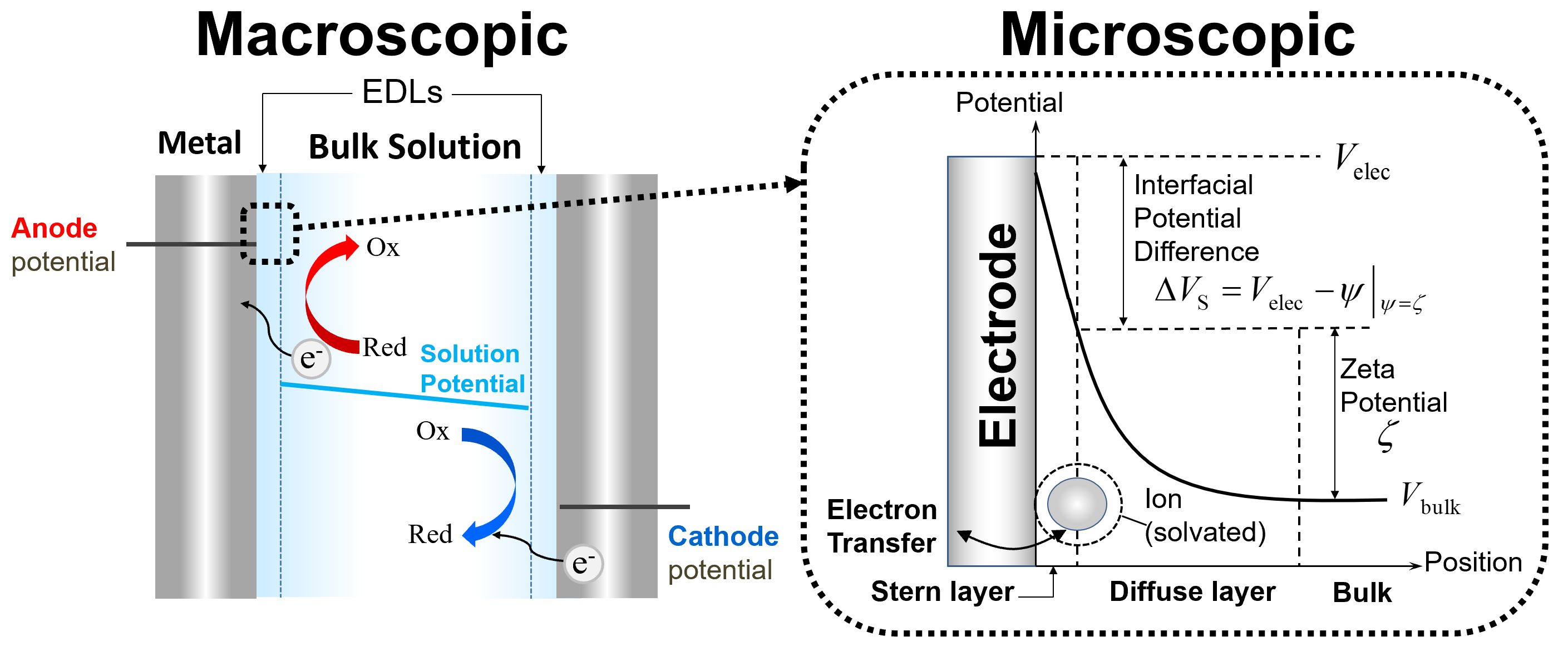
Accounting for electrical double layer effects in electrochemistry
MEMS Fabrication
To further elucidate the interaction between electro-osmotic flow and surface charge, we are building a nanochannel with an embedded electrode. Such a system can directly change the surface charge by applying voltage. This novel technique provides several advantages, including the use of only one electrolyte solution, the ability to directly modulate the electric double layer (EDL) by applying potentials on the embedded electrodes, and the production of predictable sample plugs.

We are working to improve a new approach to harvesting electrical energy from a pressure-driven multiphase system. The Liquid-Metal Microfluidic Portable Energy Transducer (LiMMPET) is the modern, microfluidic representation of a classical Wimshurst machine. Alternating droplets of conducting and insulating fluids flowing in a serpentine microchannel capacitively interact to cause charge separation between two connected liquid metal droplets via an embedded microfabricated electrode.
To realize the microliter scale of biofluid extraction, we additionally designed and fabricated a microneedle array that can puncture viscoelastic skin far less painlessly than the commercially available CGM’s. However, it has been shown that producing microneedles in a sharp, beveled form with complete control of the needle geometries is difficult to achieve with the current with microelectromechanical fabrication techniques, hindering the mass commercialization of microneedles in the medical field.
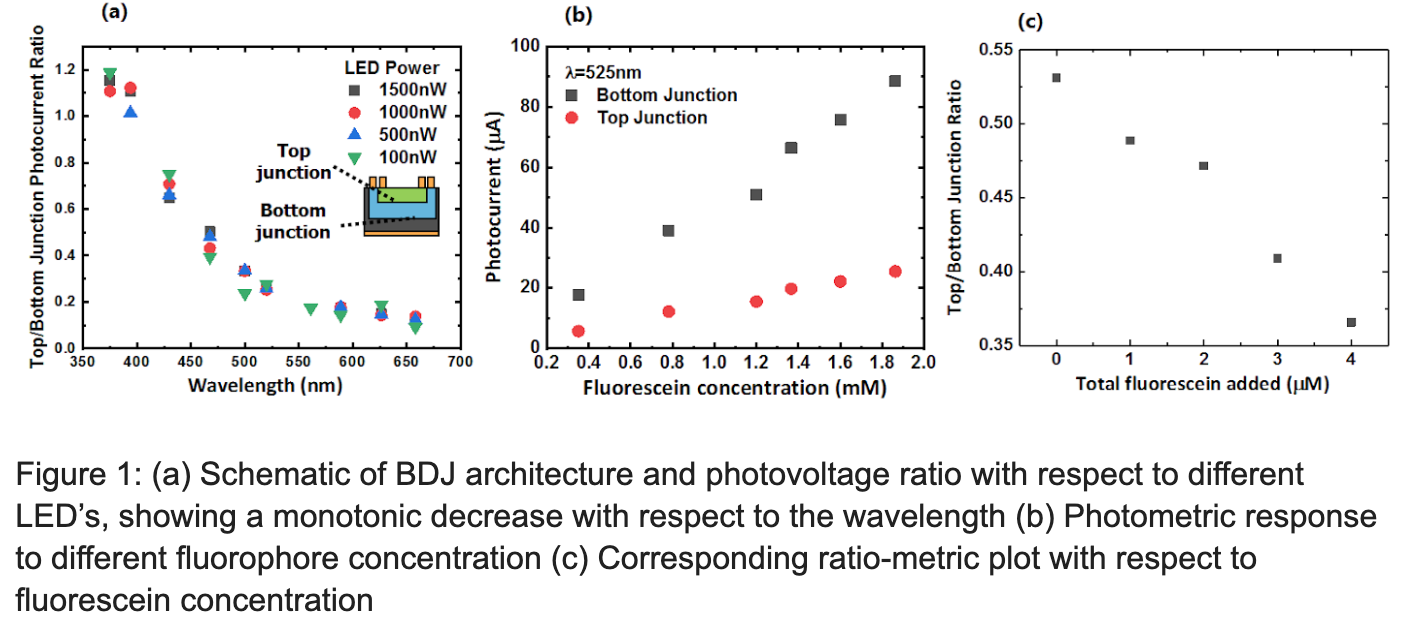
In this work, we are developing an integrated optical detector for use in continuous glucose monitors (CGM’s). Fluorescence-based optical sensing of biology offers sensitivity and specificity for the measurement of analytes of interest and has been thus successfully commercialized and employed for a plethora of research applications. Ratiometric optical sensing is especially preferred over a single color fluorescence measurement platform because of its insensitivity to the light scattering, surface reflection, and radiation fluctuation.
Diabetes Related
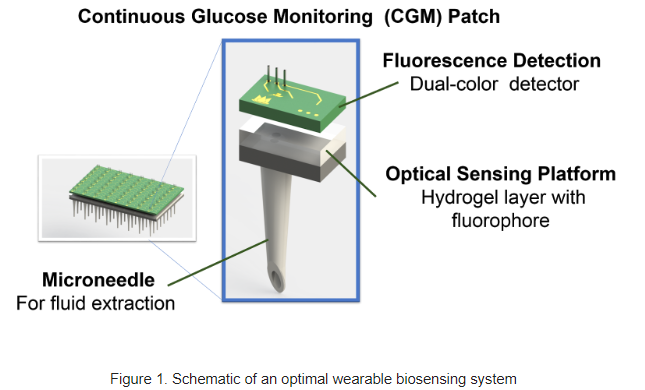
Continuous glucose monitors (CGM) are revolutionizing the way that patients with diabetes manage their condition. However, these systems are typically bulky, expensive and require calibration, meaning adoption is low. To promote wider adoption, CGMs must be accurate and stable, but also small, painless, and easy to use.
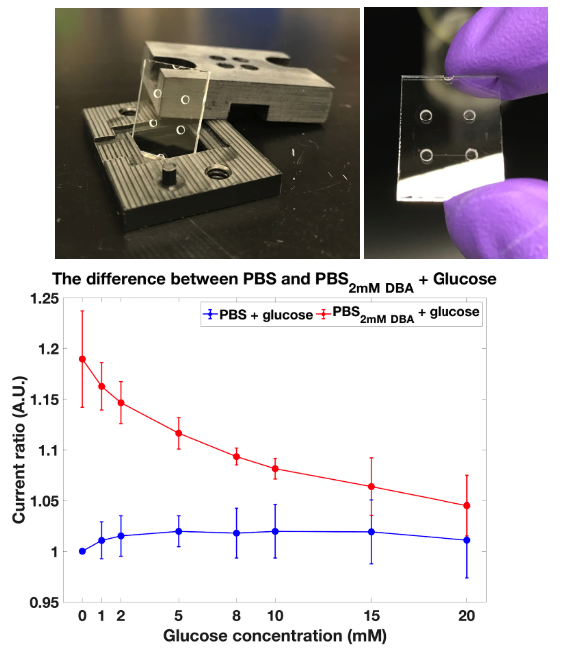
Leveraging the non-enzymatic sensors that have been developed in our lab for optical glucose sensing, we are developing similar non-enzymatic sensors based off electrical conductivity measurements in solution, for eventual applications in wearable and implantable glucose monitors. Specifically, we have synthesized new molecules which bind glucose and change charge at neutral pH. Thus conductivity in the solution can be changed once the molecules bind with glucose. Importantly, the reaction is reversible, and depends on the pKa of the molecules.
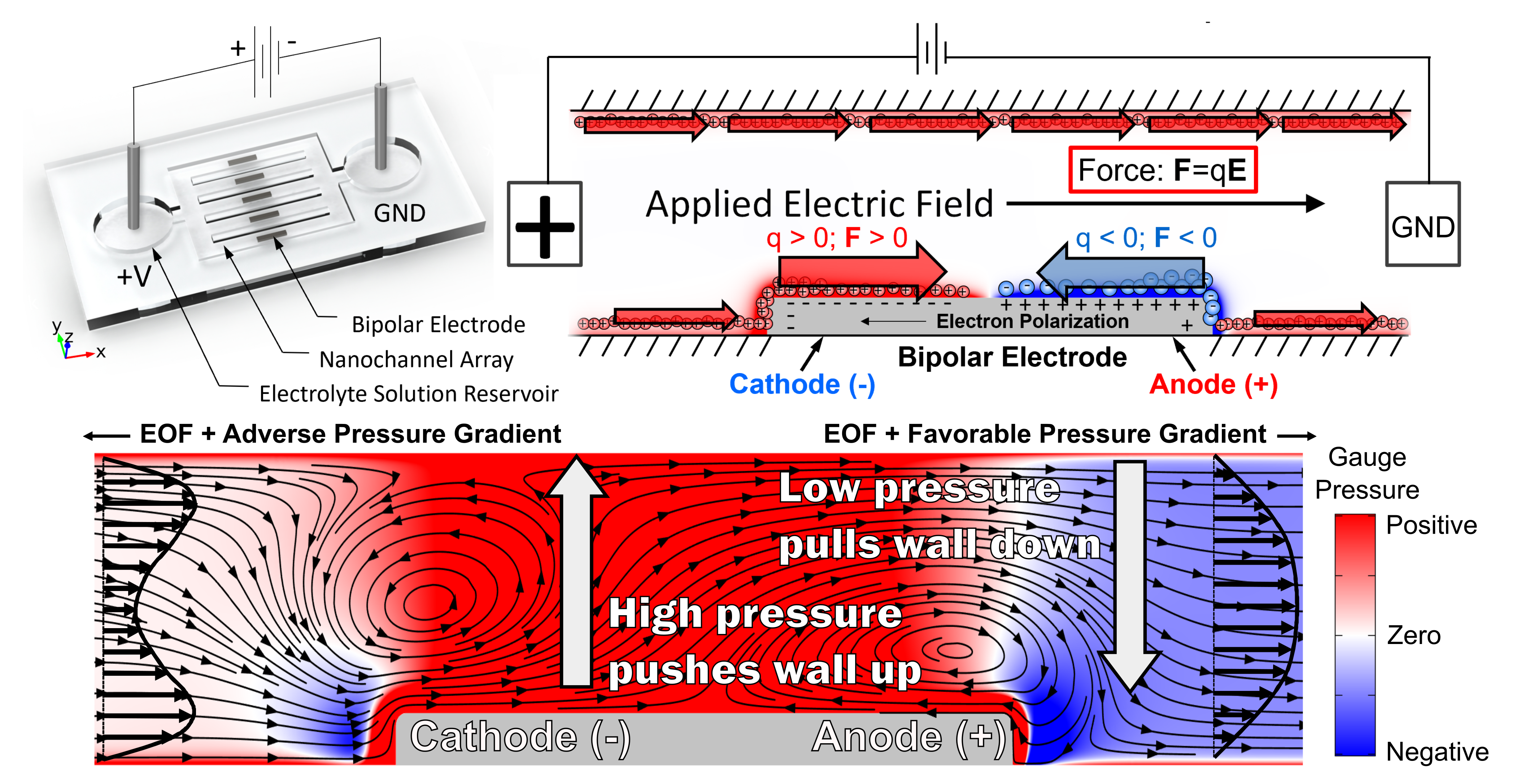
Bipolar electrode micropump using flexible, micron-thin film